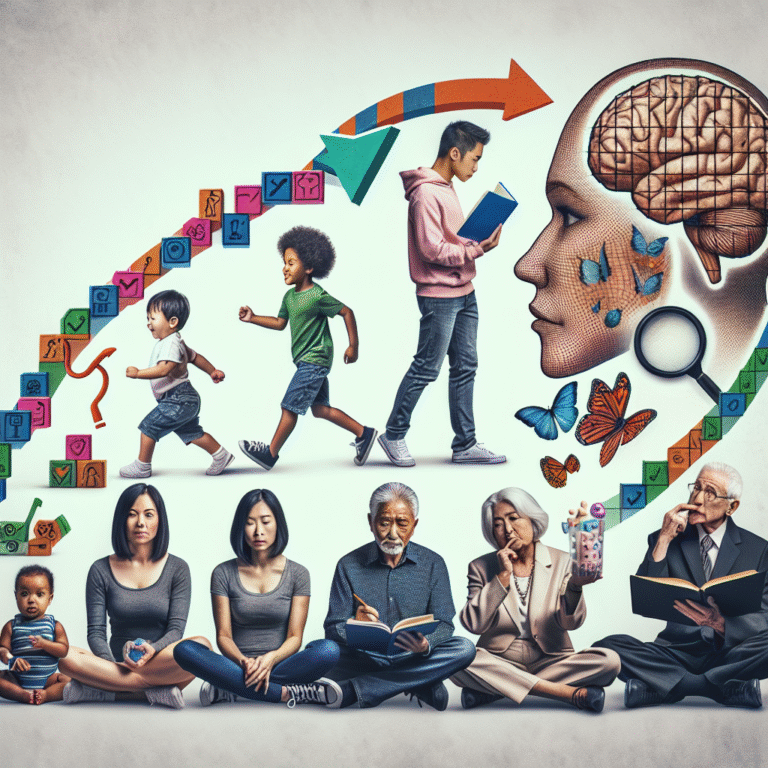
Introduction
In today’s rapidly changing world, mental health care has emerged as a pivotal concern across all demographics. The stigma surrounding mental health illness often creates barriers that prevent individuals from seeking help. Thus, breaking these barriers requires innovative intervention strategies that address not only the symptoms of mental health disorders but also the societal attitudes that hinder individuals from receiving the care they need. In this article, we will explore Breaking Barriers: The Role of Intervention Strategies in Mental Health Care, examining the various methods and approaches that have proven effective in improving mental health outcomes.
The Importance of Intervention Strategies in Mental Health
Understanding Mental Health and Its Challenges
Mental health challenges affect millions of individuals globally. From anxiety and depression to more severe conditions like schizophrenia or bipolar disorder, the need for effective intervention strategies cannot be overstated. According to the World Health Organization, around 1 in 5 people will experience a mental health issue in their lifetime. However, many will not access the necessary care due to various barriers such as stigma, lack of resources, or misinformation.
What Are Intervention Strategies?
Intervention strategies refer to structured approaches designed to identify, address, and support individuals dealing with mental health disorders. These strategies can be preventative or responsive, ranging from community programs and therapy techniques to policy reforms and public health initiatives.
Types of Intervention Strategies
1. Cognitive-Behavioral Therapy (CBT)
Cognitive-Behavioral Therapy has proven to be one of the most effective psychological treatments for various mental health disorders. This therapy focuses on altering negative thought patterns that contribute to emotional distress. Research has shown that CBT can result in significant long-term improvements in mental health.
Case Study: CBT in Action
A community clinic in Boston implemented a CBT program targeting adolescents suffering from anxiety. After six months of intervention, 80% of participants reported reduced anxiety levels. This case illustrates Breaking Barriers: The Role of Intervention Strategies in Mental Health Care through the provision of accessible therapy that empowers young individuals to manage their conditions effectively.
2. Mindfulness and Meditation Programs
Mindfulness practices have gained considerable traction as intervention strategies in mental health care. These practices aim to enhance self-awareness and emotional regulation.
Case Study: Mindfulness at Work
A tech company in Silicon Valley introduced a mindfulness program for its employees facing work-related stress. After a year, the company noted a 30% reduction in reported mental health issues among participants. This highlights the transformative potential of intervention strategies focused on mental well-being in organizational settings.
3. Psychoeducation
Educating individuals about mental health can dramatically reduce stigma and increase the likelihood of seeking help. Psychoeducation involves equipping individuals with knowledge about mental health conditions and their treatments.
Case Study: Community Workshops
A non-profit organization conducted workshops aimed at educating rural communities about mental health. Attendees reported feeling more empowered and informed about available resources and services, demonstrating the effectiveness of psychoeducation as an intervention strategy.
4. Policy Reforms
Advocating for policy changes can create systemic shifts that improve mental health care access. This includes lobbying for increased funding for mental health services and protecting patients’ rights.
Case Study: The Mental Health Reform Act
After the passage of the Mental Health Reform Act in Australia, mental health funding increased significantly, leading to a higher number of accessible services. This case exemplifies how legislation can break barriers in mental health care.
Understanding Barriers to Accessing Mental Health Services
1. Stigma and Misunderstanding
Stigma surrounding mental health can deter individuals from seeking help. The fear of being misunderstood or judged often prevents individuals from accessing necessary services.
2. Lack of Resources
Many communities lack adequate mental health resources, making it difficult for individuals to find and receive care. This is especially true in rural or underserved areas where access to mental health professionals is limited.
3. Cultural Barriers
Cultural beliefs and norms can also significantly impact an individual’s willingness to seek help. Some cultures may view mental illness as a personal weakness, which creates a barrier to care.
Mechanisms for Breaking Barriers: Effective Strategies
1. Community Engagement and Outreach
Initiating community-based programs can effectively reach out to those who are hesitant to seek care. This involves collaboration with local leaders and organizations to disseminate information and destigmatize mental health issues.
2. Training for Healthcare Providers
Equipping healthcare providers with the skills to recognize and address mental health issues can enhance the overall efficacy of healthcare systems. Training on cultural competence and sensitivity can lead to better patient-provider relationships and improved care.
3. Integration of Mental Health into Primary Care
Integrating mental health services into primary care settings can provide more accessible care. Patients are more likely to seek help when mental health services are available alongside physical health care.
The Future of Mental Health Interventions
The landscape of mental health care is constantly evolving, and so are the strategies to break barriers. Leveraging technology, such as teletherapy and mobile health applications, can further expand access to mental health services.
Teletherapy: Meeting the Needs of Modern Patients
Teletherapy has become a vital tool in delivering mental health care, especially in the wake of the COVID-19 pandemic. By providing care remotely, teletherapy can break geographical and logistical barriers for individuals in need.
Case Study: Teletherapy Success
A study conducted during the pandemic revealed that 90% of participants reported feeling satisfied with their teletherapy sessions, with many noting that it reduced the stigma and logistical barriers previously faced in accessing in-person therapy.
Conclusion
Breaking Barriers: The Role of Intervention Strategies in Mental Health Care is not merely a theory but a necessity in addressing the complexities of mental health challenges. By adopting innovative strategies and fostering an inclusive approach toward mental health care, we can enhance access and improve outcomes for millions of individuals globally.
As we move forward, let us prioritize these intervention strategies, ensuring they reach every corner of our communities. Everyone deserves the opportunity to receive optimal mental health care and live fulfilling lives.
FAQs
1. What are some common barriers to accessing mental health care?
Common barriers include stigma, lack of resources, cultural beliefs, and geographical constraints.
2. How can CBT specifically help individuals with anxiety?
CBT helps individuals by changing negative thought patterns and teaching coping mechanisms that reduce anxiety levels.
3. What role does psychoeducation play in mental health?
Psychoeducation increases awareness and understanding of mental health conditions, leading to decreased stigma and more people seeking help.
4. How effective is teletherapy compared to in-person therapy?
Studies show that teletherapy is highly effective, with many individuals reporting satisfaction equal to or greater than in-person sessions.
5. How can communities get involved in improving mental health services?
Communities can support mental health initiatives through outreach programs, partnerships with local organizations, and advocacy for policy changes that prioritize mental health funding.
By actively engaging with these strategies and advocating for improvements, we can contribute to a future where mental health care is not a privilege but a fundamental right for all.














